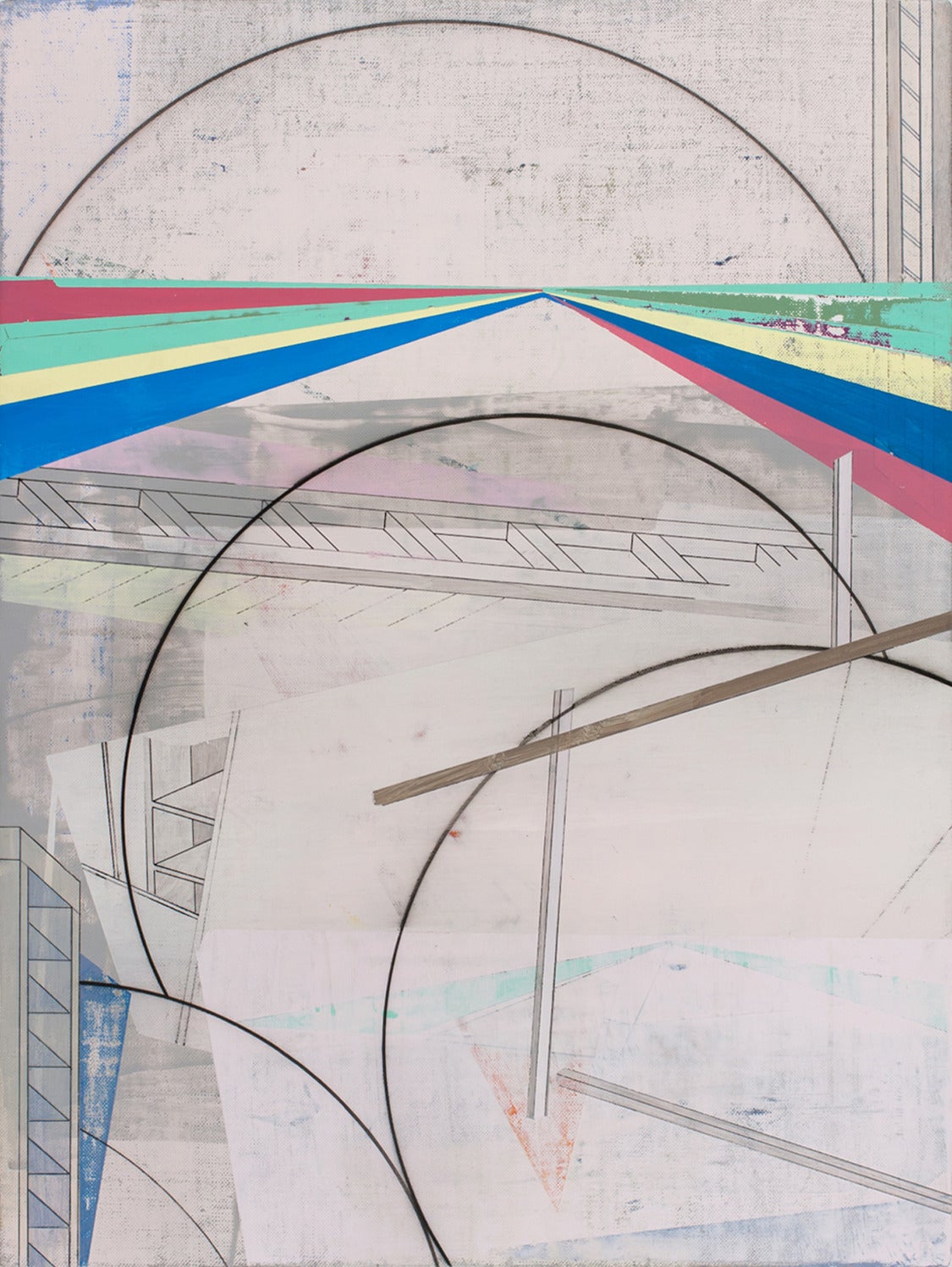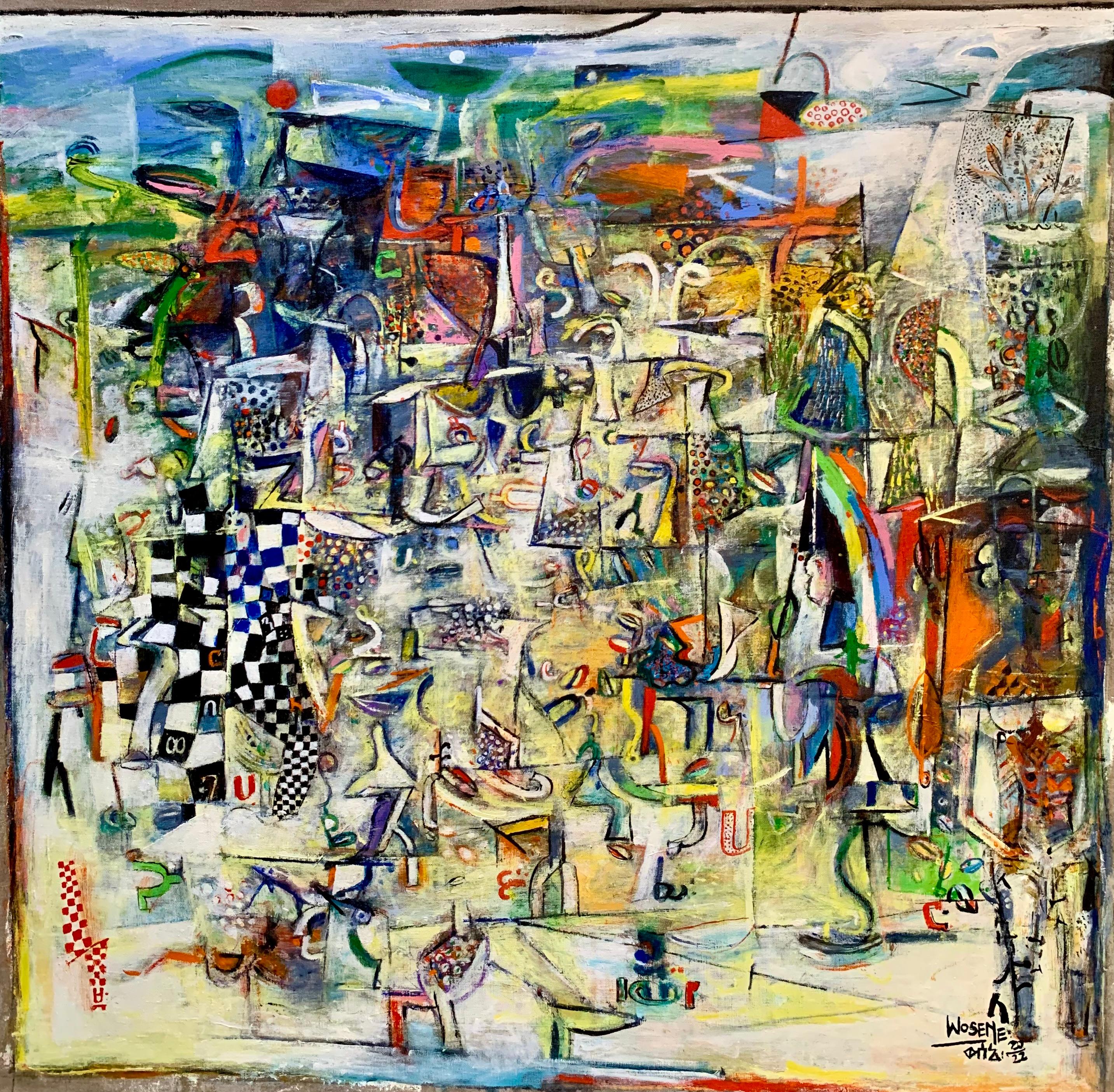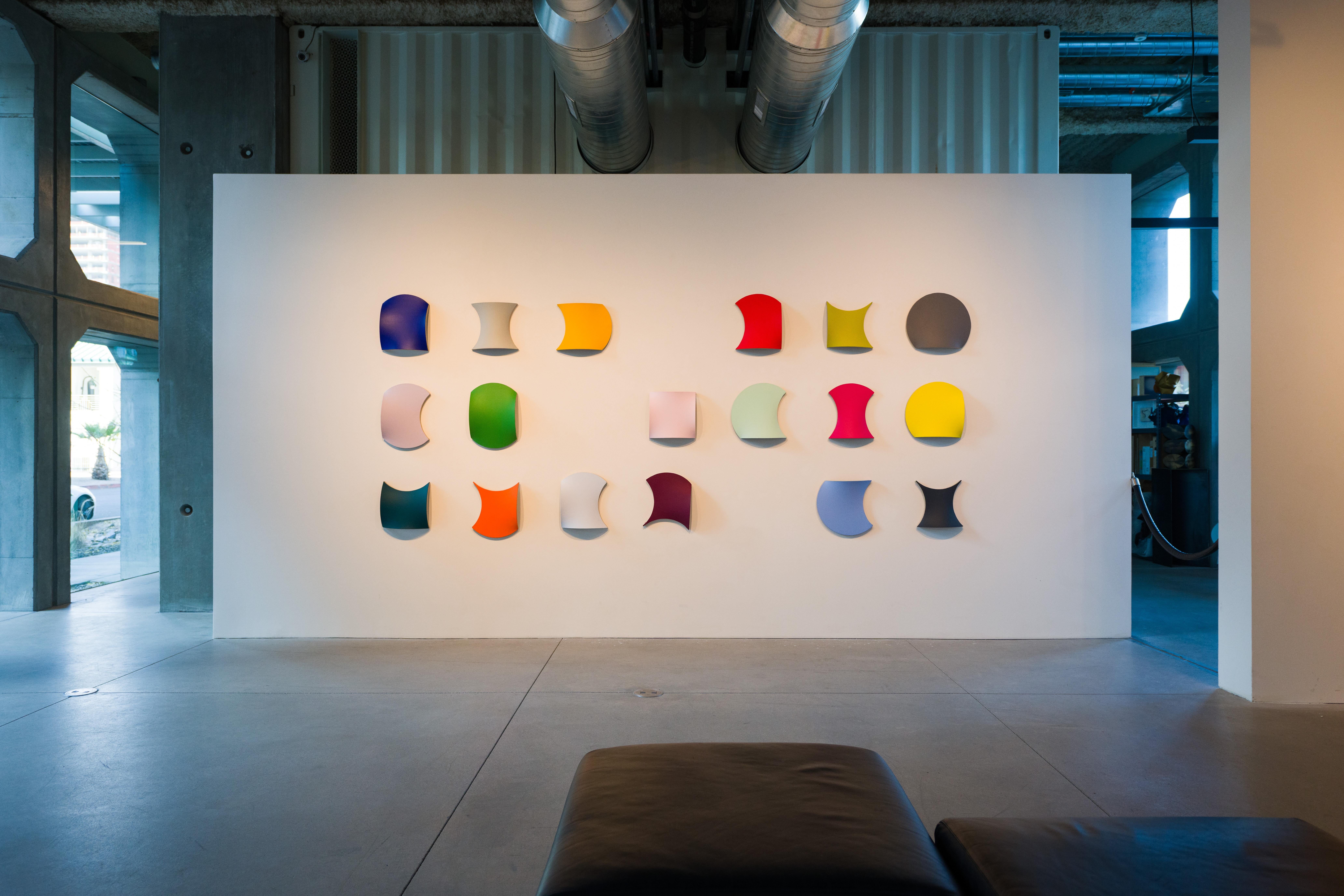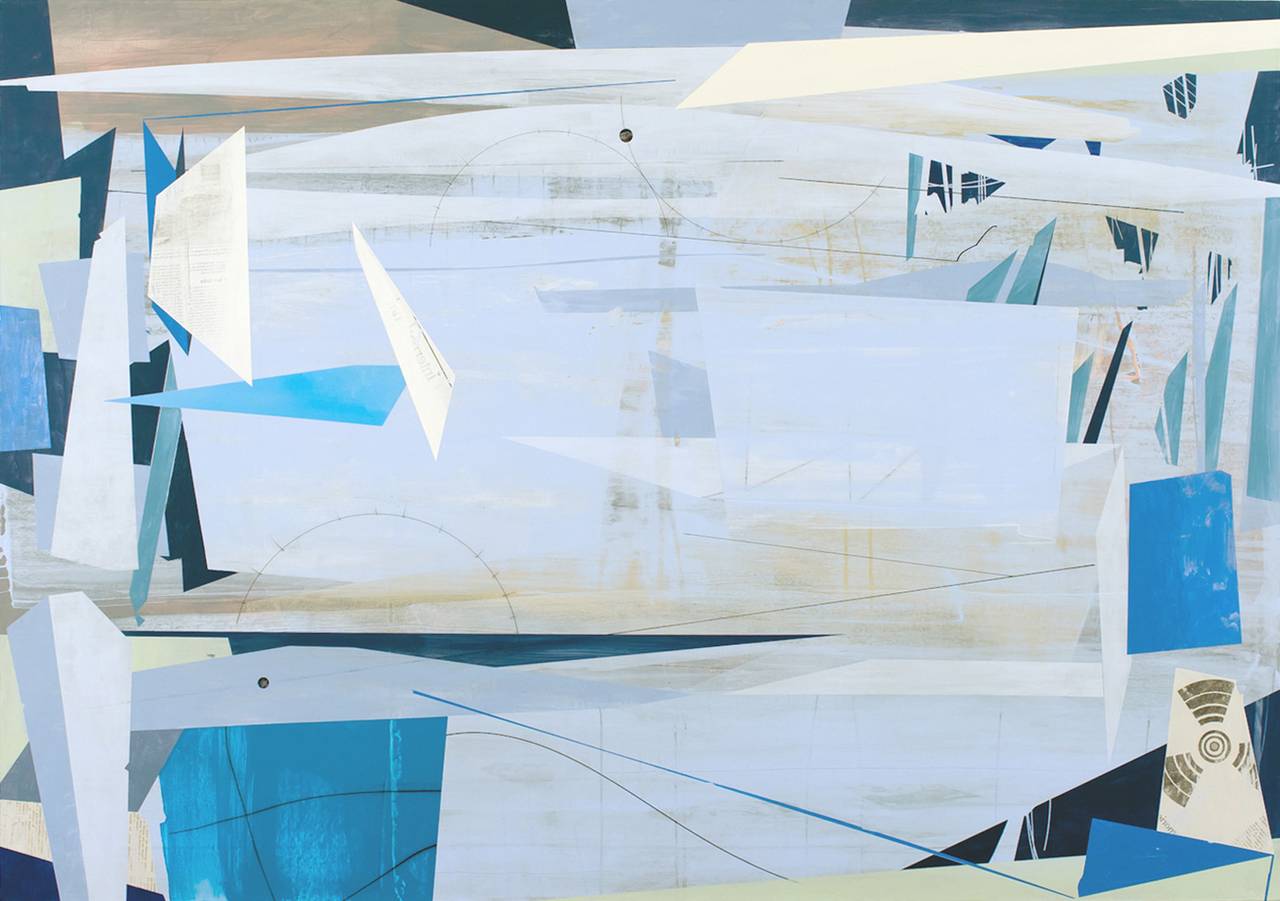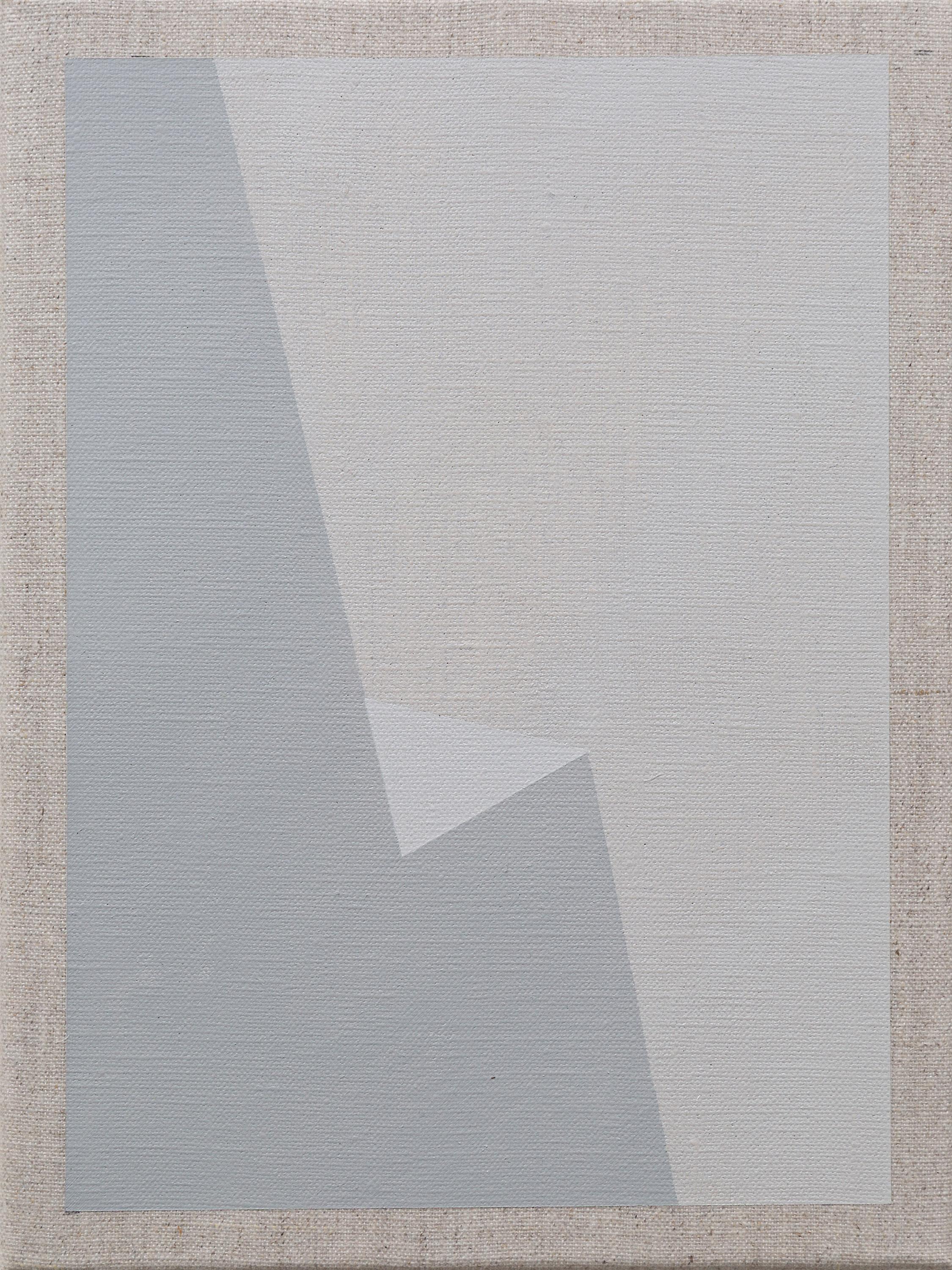David Hare"Cronus Descending" Acrylic on Linen Abstract Surrealist Painting by David Hare1990
1990
About the Item
- Creator:David Hare (1917-1992, American)
- Creation Year:1990
- Dimensions:Height: 64 in (162.56 cm)Width: 46 in (116.84 cm)
- More Editions & Sizes:UniquePrice: $60,000
- Medium:
- Movement & Style:
- Period:
- Framing:Framing Options Available
- Condition:
- Gallery Location:New York, NY
- Reference Number:1stDibs: LU1841214419092
David Hare
David Hare, a surrealist and Abstract Expressionist sculptor and photographer, was born in New York City on March 10, 1917. From 1936–37, he studied biology and chemistry at Bard College in Annandale-on-Hudson, New York. Hare had no formal training in art but began experimenting. He took up photography in the 1930s and by the end of the decade was working in color. The Walker Galleries in New York exhibited his photographs in 1939. From 1941–44, Hare founded and edited the surrealist magazine VVV with André Breton, Marcel Duchamp and Max Ernst. Peggy Guggenheim presented solo shows of Hare's work in her The Art of This Century Gallery from 1944–47. In 1948, he was a founding member, together with William Baziotes, Robert Motherwell and Mark Rothko, of The Subjects of the Artist school in New York and Hare, became friendly with Jean-Paul Sarte. Hare died on December 21, 1992, in Jackson.
- ShippingRetrieving quote...Ships From: New York, NY
- Return PolicyA return for this item may be initiated within 3 days of delivery.
- "Cronus Elephant" Abstract Composition Acrylic on Linen by David HareBy David HareLocated in New York, NYDavid Hare Cronus Elephant, 1975 Acrylic on linen 82 x 60 inches “Freedom is what we want,” David Hare boldly stated in 1965, but then he added the caveat, “and what we are most afr...Category
1970s Abstract Abstract Paintings
MaterialsLinen, Acrylic
- "Erotic #1 (Cronus Sex)" Acrylic and Paper Collage on Linen Canvas AbstractBy David HareLocated in New York, NYDavid Hare Erotic #1 (Cronus Sex), 1970 Acrylic and paper collage on linen 68 x 51 inches “Freedom is what we want,” David Hare boldly stated in 1965, but then he added the caveat, ...Category
1970s Abstract Abstract Paintings
MaterialsLinen, Paper, Acrylic
- "Untitled, " Jay Rosenblum, Hard-Edge Color Field, Colorful Horizontal StripesBy Jay RosenblumLocated in New York, NYJay Rosenblum (1933 - 1989) Untitled, 1973 Acrylic on canvas 54 x 128 inches Signed twice and dated on the reverse Provenance: Private Collection, Long Island Jay Rosenblum experim...Category
1970s Hard-Edge Abstract Paintings
MaterialsCanvas, Oil, Acrylic
- "Lexington, " Larry Zox, Abstract Expressionism, Minimalism, Brown ModernismBy Larry ZoxLocated in New York, NYLarry Zox Lexington, 1973 Acrylic on canvas 61 x 49 inches Provenance: Andre Emmerich Gallery, New York Janie C. Lee Gallery, Houston, Texas Private Collection, Greenwood Village, Colorado Exhibited: New York, Andre Emmerich Gallery, Larry Zox: New Paintings, March 10 - 28, 1973. Houston, Texas, Janie C. Lee Gallery, Larry Zox, February - April, 1974. A painter who played an essential role in the Color Field discourse of the 1960s and 1970s, Larry Zox is best known for his intensely and brilliantly colored geometric abstractions, which question and violate symmetry. Zox stated in 1965: “Being contrary is the only way I can get at anything.” To Zox, this position was not necessarily arbitrary, but instead meant “responding to something in an examination of it [such as] using a mechanical format with X number of possibilities." What he sought was to “get at the specific character and quality of each painting in and for itself,” as James Monte stated in his introductory essay in the catalogue for Zox’s 1973–74 solo exhibition at the Whitney Museum of American Art. Zox also at times used a freer, more intuitive method, while maintaining coloristic autonomy, which became increasingly important to him in his later career. Zox began to receive attention in the 1960s, when he was included in several groundbreaking exhibitions of Color Field and Minimalist art, including Shape and Structure (1965), organized by Henry Geldzahler and Frank Stella for Tibor de Nagy, New York, and Systemic Painting (1966), organized by Lawrence Alloway for the Guggenheim Museum. In 1973–74, the Whitney’s solo exhibition of Zox’s work gave recognition to his significance in the art scene of the preceding decade. In the following year, he was represented in the inaugural exhibition of the Hirshhorn Museum, which acquired fourteen of his works. Zox was born in Des Moines, Iowa. He attended the University of Oklahoma and Drake University, and then studied under George Grosz at the Des Moines Art Center. In 1958, Zox moved to New York, joining the downtown art scene. His studio on 20th Street became a gathering place for artists, jazz musicians, bikers, and boxers. He occasionally sparred with visiting fighters. He later established a studio in East Hampton, a former black smithy used previously by Jackson Pollock. Zox’s earliest works were collages consisting of pieces of painted paper stapled onto sheets of plywood. He then produced paintings that were illusions of collages, including both torn- and trued-edged forms, to which he added a wide range of strong hues that created ambiguous surfaces. Next, he omitted the collage aspect of his work and applied flat color areas to create more complete statements of pure color and shape. He then replaced these torn and expressive edges with clean and impersonal lines that would define his work for the next decade. From 1962 to 1965, he produced his Rotation series, at first creating plywood and Plexiglas reliefs, which turned squares into dynamic polygons. He used these shapes in his paintings as well, employing white as a foil between colors to produce negative spaces that suggest that the colored shapes had only been cut out and laid down instead of painted. The New York Times noted in 1964: “The artist is hip, cool, adventurous, not content to stay with the mere exercise of sensibility that one sees in smaller works.” In 1965, he began the Scissors Jack series, in which he arranged opposing triangular shapes with inverted Vs of bare canvas at their centers that threaten to split their compositions apart. In several works from this series, Zox was inspired by ancient Chinese water vessels...Category
1970s Abstract Expressionist Abstract Paintings
MaterialsCanvas, Acrylic
- "Night Road" Gerome Kamrowski, Abstract Expressionism Surrealism, Purple ImpastoBy Gerome KamrowskiLocated in New York, NYGerome Kamrowski (1914 - 2004) Night Road, 1966 Acrylic on canvas 58 1/4 x 96 1/4 inches Signed and dated Provenance: The Artist The Kamrowski Estate (by family descent in 2004) Exhibited: The Detroit Institute of Arts, Detroit, Michigan, 56th Exhibition for Michigan Artists, November 18 - December 31, 1966, no. 32, illustrated (Night Road was the winner of the "Phyllis King Weiner Memorial Prize" at this exhibition). Ann Arbor, University of Michigan Museum of Art, Gerome Kamrowski: A Retrospective Exhibition, August 30 - October 16, 1983, no. 70, illustrated. Tarpon Springs, Florida, Leepa-Rattner Museum of Art, St. Petersburg College, Gerome Kamrowski: An American Surrealist, September 8 - October 27, 2002, no. 23. Chelsea, Michigan, River Gallery, Gerome Kamrowski: 1914-2004, A Memorial Retrospective, October 30 - December 5, 2004. Gerome Kamrowski was born in Warren, Minnesota, on January 19, 1914. In 1932 he enrolled in the Saint Paul School of Art (now Minnesota Museum of American Art - MMAA), where he studied with Leroy Turner, and Cameron Booth. Both Turner and Booth had been students of Hans Hofmann, and were also associated with the Abstraction-Création group in Paris. It was from these peers that Kamrowski was introduced to a "kind of expressionist cubism." In 1933 Kamrowski was awarded a scholarship to the Art Students League, where he would study in New York under Hans Hofmann. Unfortunately, immigration problems had prevented Hofmann from assuming his post. Nevertheless, Kamrowski decided to remain in New York for a short time, to attend classes taught by George Grosz. After a few weeks, he returned to St. Paul, and found a position in the mural painting division of the Minnesota FAP/WPA (Works Progress Administration). In 1936 he contributed “Synthetic Cubist Style” frescoes in the Northrup Auditorium of the University of Minnesota. In 1937 Kamrowski went to Chicago to study under László Moholy-Nagy and Alexander Archipenko at the New Bauhaus (now Illinois Institute of Technology's Institute of Design). There he was exposed to new and interesting ideas regarding the role of nature in art and the "geometric basis of natural form". In 1938 Kamrowski received a Guggenheim fellowship to attend Hans Hofmann's summer school in Provincetown, Massachusetts. He then relocated to New York where he met William Baziotes. Together they shared a fascination in Surrealist automatic writing, and both artists explored its possibilities in their paintings. Kamrowski was particularly drawn to Surrealism's fundamental appeal of intuition over intellect. He was interested seeking a process that "binds all things together...a kind of cosmic rhythm". Throughout the late 1930s and early 1940s while living in New York, Kamrowski became an integral part of the emerging surrealists. In 1942, the artist Roberto Matta attempted to form a group of artists to investigate new applications for Surrealist methods. He invited Kamrowski, along with William Baziotes, Jackson Pollock, Peter Busa...Category
1960s Abstract Expressionist Abstract Paintings
MaterialsCanvas, Acrylic
- "Untitled, " Knox Martin, Abstract ExpressionismBy Knox MartinLocated in New York, NYKnox Martin (1923 - 2022) Untitled Signed to lower edge Acrylic and gold foil on canvas 9 x 9 inches Knox Martin (1923-2022) was an esteemed New York School painter. Knox Martin was born in 1923 in Barranquilla, Colombia. He was the son of the aviator, painter, and poet William Knox Martin, the first man to fly over the Andes Mountains. After serving in World War II, Knox Martin attended the Art Students League of New York on the G.I. Bill from 1946-1950, where he studied with Harry Sternberg, Vaclav Vytlacil, Will Barnet, and Morris Kantor. In 1954, Knox Martin's friend Franz Kline placed a painting of his in the Stable Gallery Annual. Charles Egan of the renowned Charles Egan Gallery saw Knox Martin's painting at the Stable Gallery and asked Martin to show his work in a one-man show for the tenth anniversary of the Egan Gallery. Since then, Knox Martin was a celebrated painter, sculptor and muralist. Knox Martin had an extensive exhibition record and his work is in museum, corporate and private collections worldwide. His two best-known murals in NYC are Venus and Woman with Bicycle...Category
Late 20th Century Abstract Abstract Paintings
MaterialsGold, Foil
- Pink TopsBy David CollinsLocated in Dallas, TXDavid Collins was raised in Dallas, received a BFA from the Rhode Island School of Design, and currently lives and works in New York City. Collins has had numerous solo exhibitions i...Category
21st Century and Contemporary Abstract Geometric Abstract Paintings
MaterialsAcrylic, Linen, Wood Panel
- Semi-Abstract, Colorful Painting by African artist 'Woman of Light'By Wosene KosrofLocated in White Plains, NY'Woman of Light' by Ethiopian/American artist Wosene Worke Kosrof, 2022. Acrylic on linen, 40 x 40 in. Wosene is best known for his ingenious renderings o...Category
2010s Abstract Abstract Paintings
MaterialsLinen, Acrylic
- The Alphabet of Silly ColorsBy Jan Maarten VoskuilLocated in Phoenix, AZb. 1964, Arnhem Jan Maarten Voskuil stretches his paintings into the third dimension. His crafted, partly curved wooden constructions are based on simple geometric principles: the c...Category
2010s Abstract Geometric Abstract Sculptures
MaterialsLinen, Acrylic
- The RiggingBy David CollinsLocated in Dallas, TXDavid Collins earned a BFA from the Rhode Island School of Design, and currently lives and works in New York City. Collins has had numerous solo exhibitions in New York, and has exhi...Category
21st Century and Contemporary Abstract Abstract Paintings
MaterialsAcrylic, Linen
- K.13Located in Los Angeles, CAOriginal minimalist acrylic painting by Karli Henneman. Executed in hard-edge technique. Shown at FF1051 Gallery in Los Angeles, CA. Framed in white wash box frame. Artist Statemen...Category
2010s Abstract Geometric Abstract Paintings
MaterialsAcrylic, Linen
- Intended White (Abstract Painting)Located in London, GBIntended White (Abstract painting) Acrylic on Belgian linen - Unframed "This artwork is exclusive to IdeelArt. This artwork will be shipped rolled in a dent-resistant tube. This m...Category
2010s Abstract Abstract Paintings
MaterialsAcrylic, Linen
